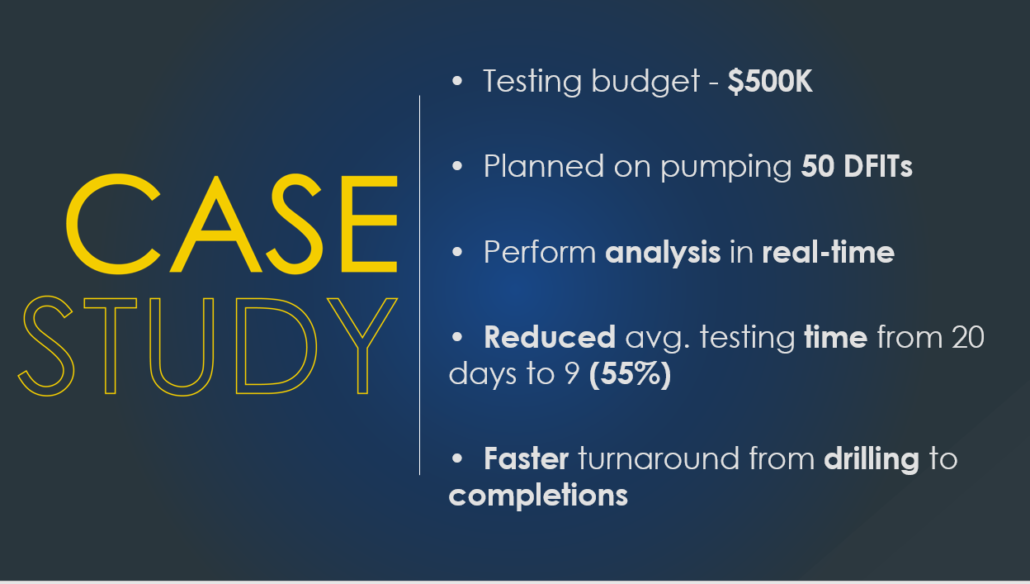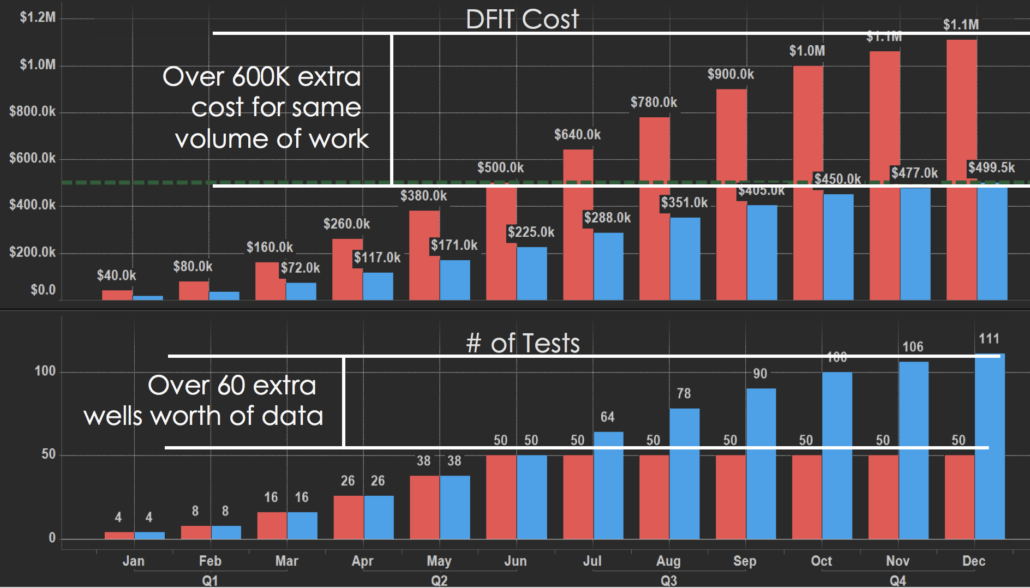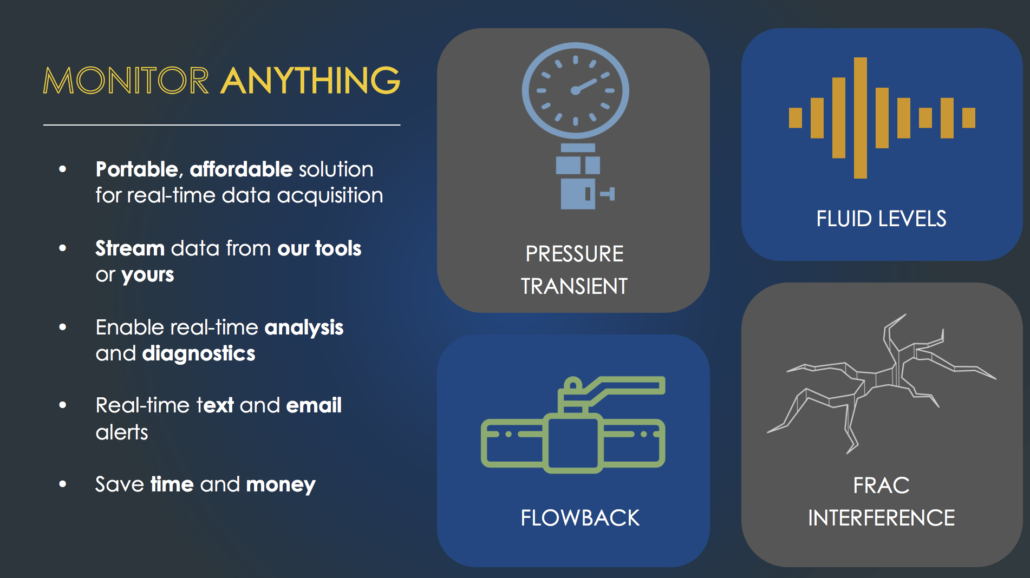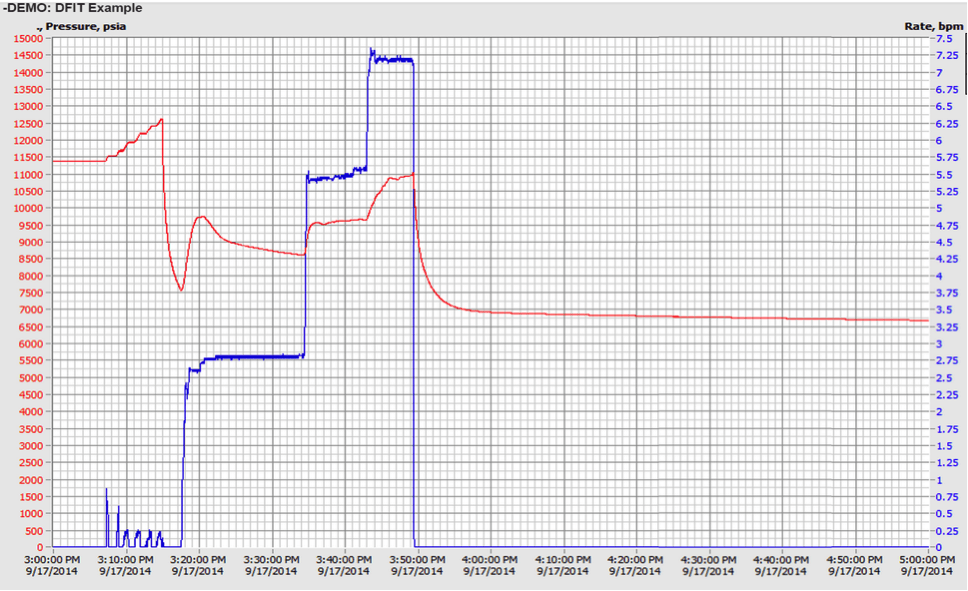Best practices for better DFITs
10 Tips for pumping better quality, more successful Diagnostic Fracture Injection Tests (DFIT) –
10 Tips for pumping better quality, more successful Diagnostic Fracture Injection Tests (DFIT) –

Here at RDS, we have carved out a couple of niche specialties in the industry — Diagnostic Fracture Injection Tests (DFITs) and offset-well pressure monitoring. Although DFIT technology was pioneered many years ago, we continue to capture a significant number of these tests due to the valuable information they provide. Often, these tests are ordered by reservoir engineers simply hoping to improve the input values of their models, but lately, we have noticed some innovative individuals taking a different slant on the more traditional applications. These engineers understand DFITs to be another tool in their toolbox that helps to uncover those reservoir mysteries and unknowns, and in the case presented in this whitepaper, the authors use the findings from DFITs to evaluate potential pressure barriers as part of a multi-pronged approach to delineating stacked pay.
Few folks will argue that stacked pay is not an attractive quality when evaluating an asset. However, it does add another level of complexity in determining the best approach for proper development. Understanding reservoir qualities and fracture geometries are vital in this endeavor. This paper discusses the use of DFITs, offset pressure monitoring, radioactive proppant tracer (RA), and electrically conductive proppant in order to better reach that understanding. The authors make a clear case and point out that better data, in regards to fracture barriers and fracture height, can directly aid in both optimization and risk mitigation. The authors also state that the costs of these tests are “easily offset and justified.”
Overall, this is a good read through the lens of an innovative and science/data-driven operator, that addresses prevalent issues in the development of stacked pay in unconventional reservoirs.
The paper can be downloaded HERE from OnePetro.

Over the last twenty years, Diagnostic Fracture Injection Tests, or DFIT’s, have evolved into commonly used techniques that can provide valuable information about the reservoir, as well as hydraulic fracture treatment parameters. Thousands are pumped every year in both conventional and unconventional reservoirs. Unfortunately, many tests that are pumped provide poor or no results due to either problematic data acquisition or incorrect analysis of the acquired data.
This paper discusses common issues and mistakes made while acquiring DFIT data, and provides details of what the author believes to be guidelines and rules of thumb on how to avoid them. It goes on to addresses potential problems that can occur during DFIT analysis, and more specific issues such as poor ISIP data from perforation restriction, loss of hydrostatic head, gas entry and the resulting phase segregation, and the use of gelled fluids.
Although industry thought-processes may have changed slightly since the paper was published in 2014, the ideas presented by the author are as relevant as ever — remember, you only have one shot at performing a DFIT correctly!
The paper can be downloaded HERE from OnePetro.
Several months ago, Reservoir Data Systems was called upon by a notable client to provide real-time solutions on a large-scale data project. The client allocated an annual budget of $500k for the project, with the hopes of capturing DFITs on 50 wells ($10k being the average expected cost per gauge rental per test). Using memory gauges, the average test time was 20 days.

By utilizing Reservoir Data System’s EBOT Surface Pressure Gauges, FLOWBOT Flowing Rate Meters, and proprietary FASTRACK Real-time Communications Package, the client was able to view the data in real-time, which would result in significant gains of cost and efficiency.
By means of the RDS user portal, the client was able to visualize the tests in real-time — they were able to actually see the pressure data, rather than hoping the memory gauge had captured everything reliably. Receiving the data instantly also allowed the customer to perform rolling analyses on each test, effectively cutting the total time of each test in half.

The significant time savings allowed the client to capture an additional 60+ wells of data while staying within the original budget. The incremental cost to perform the same amount of tests using the memory gauges, at twice the test length, would have increased their budget by over 600K.
The Reservoir Data Systems FASTRACK Real-Time Communications Package gives users a quick, easy, and cost-effective way to integrate real-time data into their operational processes — we help our clients make better, smarter, and faster decisions, while saving them both time and money.

For more information, CLICK HERE!

Two weeks ago, Reservoir Data Systems sponsored a DFIT Processes and Applications SPE Workshop in Houston and it was a huge success! Over 90 industry experts, experienced engineers, and distinguished academics came together to share best practices and provide valuable insights.
Before the workshop, I spoke to various reservoir and completion engineers from different companies about their DFIT programs. Several folks asked the me the same question—how do we creatively use DFITs to maximize value to the organization? In other words, what all can we do with a DFIT program? How do we maximize the ROI for DFITs? What other advantages can we realize?
I was so pleased and intrigued when operators shared their DFIT stories at the workshop. One of the most significant take-aways (there were several) from the workshop was hearing the ways operators found value (oftentimes unintentionally) from their DFIT programs. I want to share a few of these with you. Below is a brief summary from the workshop on ways operators have used DFIT information to bring value in development decisions:
Obviously, there are other ways to utilize a DFIT program to add value and insight for development decisions. We will be writing on the above topics in more detail over the next few months. In the meantime, please comment on other ways your team or organization has advantageously used DFIT information, realized value from DFIT campaigns, or measured the ROI from a successful DFIT program? Looking forward to the hearing from you!
Have you ever found yourself sitting in your office wondering how the DFIT you pumped last week was going on your well a thousand miles away? How do you check it? How do you know where you’re at in your test? In the year 2015, we still rely on simple surface and downhole pressure memory gauges to record the pressure for these tests. Typically, this requires a pumper or supervisor to drive hours out to location, just to plug in a computer and get a quick download of the gauge data that then has to be sent back to the engineer and analyzed. The total turnaround from leaving the house to getting the data to performing an analysis can take days if not weeks, not to mention the time and effort spent performing such a simple task. All the while you’re being charged for the gauge to sit out on your well.
It’s simply unacceptable to live in a connected world with smart phones in our pockets and not have access to your well data. With Reservoir Data System’s FasTrack communication system, the disconnect between the field and office has been eliminated. The FasTrack is the only system that streams the gauge data back to a server that you can access via any internet enabled device (cell phone, tablet, computer), and can even be downloaded while the gauge is still on the well, allowing you to perform your analysis and ensure you have collected enough data before you pull the gauge off the well (this also allows you to end the test early should the well go on vacuum or an outside party interrupt the test). The FasTrack even allows you to set text alerts that will notify you if the well drops below or goes above a desired pressure. Even with an accidental shut-in during the test, you will be notified and be able to remedy the situation immediately.

Having worked as an engineer on the services side of the industry for both frac and gauge service companies, I can’t tell you how many times I’ve heard customers complain that they’ve spent far more money than necessary on a DFIT gone wrong.
For example:
An engineer scheduled a DFIT for 20 days. After receiving the data, he realized that his test was interrupted 5 days prior to ending, and was stuck paying for the wasted rental days.
If the engineer were monitoring his test data in real-time, he could have saved a tremendous amount of money by ending the procedure the day the test was interrupted. The savings on this alone could have allowed for additional well tests.
Although daily gauge rental prices are comparatively low to other expenditures, the cost of a single unit over the course of a 10 or 20 day DFIT or build up can have serious impact— especially if test data is interrupted or the well goes on vacuum.
In the above example, cutting just 5 days of equipment rental could have resulted in a 25% cost reduction. That’s not to mention the wasted time and money spent retrieving and waiting on the gauge data.
Ultimately, the FasTrack is the only system that allows you to access your well tests in real-time, resulting in better quality data, less downtime, and more money in your pocket.
Until next time,
John Kalfayan
Sr. Account Manager, M.E.